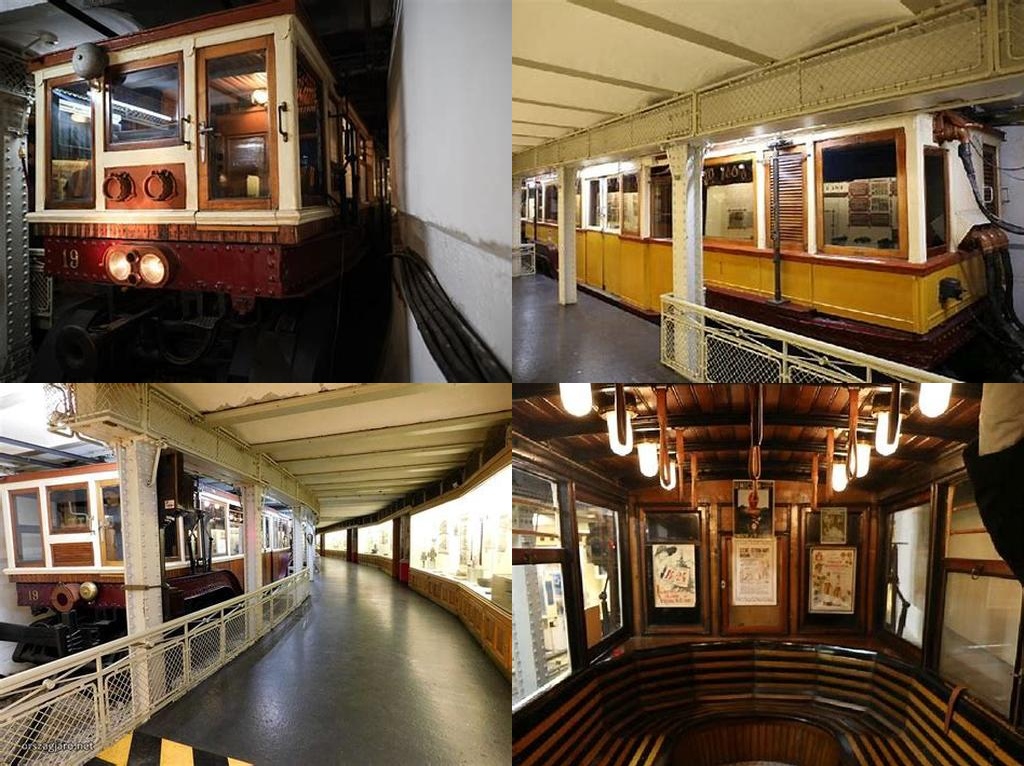
Földalatti Vasúti Múzeum is one of those rare museums that truly transports you—quite literally—back in time. Head out to the bustling heart of Budapest, descend underneath Vörösmarty tér, and you’ll find yourself in the wonderfully evocative world where commuters from the late 19th century once bustled. The museum is housed inside the original tunnels and platforms of the oldest section of the continental European metro, which was inaugurated in 1896. Imagine the thrill of stepping through original archways, where peeling brick walls and handsome iron beams echo with a century of stories.
What’s instantly striking about the Underground Railway Museum is its atmosphere. The scent of old stone mingles with the gentle hum of distant trains, and everywhere you turn, there’s something tactile—gleaming brass rails, colorful ceramic tiles, and polished wooden benches. The museum’s lovingly preserved stretch of platform hosts three restored cars from the original “yellow line”—the diminutive carriages used on Millennium Underground Railway Line 1. Climb aboard and you’ll notice small luxuries: elegant wood paneling, soft lighting, and rows of well-worn leather seats that once shuttled Budapest’s citizens and visitors beneath the teeming streets above.
The displays here do a fantastic job of conjuring up how radical this transit system must have seemed at the time. Archival photos show gentlemen in bowlers and ladies in feathered hats, while clanking ticket machines stand ready for your inspection. There are historic uniforms, tools, old tickets, vintage advertisements, and curious bits of engineering—no need for prior train-geek cred, as the stories told here are universal. The museum doesn’t shy away from the social changes and technical marvels that pulsed through late-19th-century Budapest; instead, it weaves a narrative that reveals just how much public transport shaped the city’s growth.
Among the treasures is a decommissioned tunnel segment, where you can see the scale and sturdiness of the system that allowed the city’s rapid expansion. Early power supplies, signaling equipment, and glass-cased models help to chart the development from those first days of underground travel right through to the present. Always, there’s a playful willingness here to let you touch and imagine—children gleefully pretending to be conductors, adults sneaking selfies at the controls, everyone pausing to squint at the flickering black-and-white footage of opening-day celebrations.
One particularly charming corner of the museum explores the stories of the people behind the railway. You’ll meet the engineers and visionaries whose names shaped the city, but whose exploits are too often forgotten. Gábor Klösz, the celebrated photographer, documented those first days with an affection and grandeur that still come through in his images. Other panels spotlight the urban planners and local workers who kept everything ticking, from the grand opening with the Austro-Hungarian emperor (no less!) through decades of city life, wartime hardship, and social change.
To visit the Földalatti Vasúti Múzeum is to experience a slice of Budapest that you cannot get above ground. It’s cozy, a little quirky, and entirely captivating—footsore travelers can even rest on a beautiful old bench and watch the modern station’s crowds, pondering how much and how little has changed. Best of all, it’s right in the center of Budapest, an easy pause between monuments, ice cream shops, and the Danube’s promenades above. If you find yourself craving both stories and shelter on a hot or rainy day in the city, duck down into this subterranean time capsule—you’ll emerge richer in history and, almost certainly, wanting to ride the iconic yellow trains yourself.





